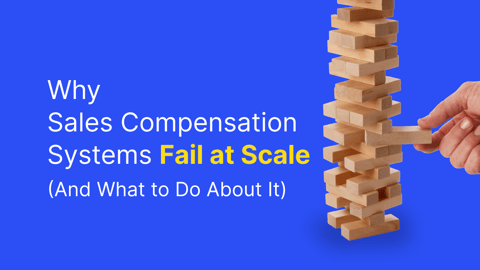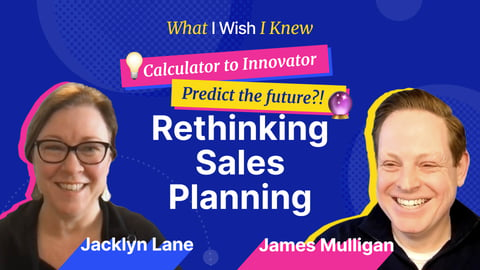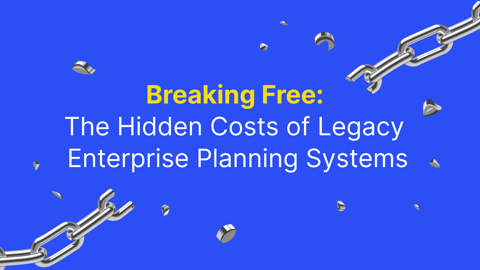When Varicent commissioned Forrester to carry out a study across several sales organizations of the tangible advantages that SPM software brought to a business, the desired outcome was that the report would be more than simple proof that our platform benefited the bottom line and ROI; we wanted to know how it improved working behaviors within sales, and sales strategy itself. The resulting report titled the Total Economic Impact™ (TEI) Study has provided all that invaluable information and more. In this blog, as well as referencing some of the main takeaways from the report itself, we’ll reveal the key points that will help you and your team to improve, manage and optimize your sales strategy, with a little help from the right SPM software applications.
Recognizing SPM Software Shortcomings
Software is just a piece of software unless it grows with the business and helps those using it to grow. In the world of sales, an adequate SPM software platform that breaks down who is selling what the most and where is helpful, but not transformative. When that data process is riddled with inputting errors from the start, and where sales performance information sits on a different system to incentive compensation information, quota allocations, or product sales, it’s a recipe for not just failure, but potentially a loss of employee trust and auditing mismanagement. This is a recognized issue with siloed and legacy systems. With this problem comes a rise in the amount of shadow accounting going on as sales executives spend time and energy working out their own commission, which also has a knock-on effect on the time and resources needed for auditing and compliance. But that’s enough of the worst-case scenarios.
Introducing and Implementing Transformational Change
Going from an adequate to a great platform involves more than investing in the tools – it requires a mental attitude movement that needs to be felt by everyone using the SPM software. And with this shift, come the results you’d want to see. With the organizations surveyed who were using Varicent’s SPM software platform, we registered:
- 60 percent reduction in shadow auditing
- 90 percent improvement in the accuracy of commission pay-outs
- 80 percent reduction in time spent on auditing and compliance.
There are many reasons why these positive figures were noted, but breaking this down, the following factors were the star contributors to note:
1. One platform, one single source of truth
Out of the discarded and mistrusted remains of the many, arose one SPM software platform. When sales executives are presented with a one-stop, fully integrated, and customizable solution, their urge to self-audit is removed, as is the temptation to take their selling skills elsewhere. The Varicent SPM software solution puts all the various streams in one accessible place.
- Want to know whether a territory is over-resourced or underperforming? The answers are right there on your dashboard.
- Would you like to be confident that your best performers are being adequately rewarded? That information is clear and accurate with the Incentive Compensation Management (ICM) application.
- What about high-level analysis into whether your sales strategy aligns with company-wide objectives and KPIs? This reporting is at your fingertips as and when you need it.
2. Improved Efficiencies Equals Better Management
By applying the results of the Forrester TEI report, we were hoping to draw a strong correlation between robust SPM software and more efficient ways of managing teams and strategy. It was evident from the survey that participants felt confident that, for example, the ICM functions were now both accurate and reliable, so they weren't distracted from the critical business of selling. They understood what commission they were on track to earn and also, should they require it, they had the ability to post queries in real-time. But with a system they could trust, the incidents of query posting were reduced anyway. This in turn meant the compensation administrators surveyed could concentrate their efforts and skills into other areas when previously, it was assumed that time spent dealing with compensation-related queries was 125 hours a year. When this was reviewed after the new platform, the change equated to “75 percent growth of efficiency and the implementation of new plans and models.”¹
3. Motivation, Insight, and Behavioral Change
With visible improvements to the figures and processes comes the added benefit of a more motivated, informed, and aligned workforce. While a watertight and rewarding ICM scheme may be the most obvious incentive, alongside that people really do want to believe that they’re “in the know” and if some element isn’t working, such as an inequity with a quota, they can gather the information to prove this and action can swiftly be taken to rectify the situation. Adaption to a one-stop SPM software shop also enables sales executives and sales team leaders to better manage the full sales pipeline themselves, rather than simply sticking a finger in the air and hoping for a fair wind.
The Shape of SPM Software Success
Using the TEI study as a template, Varicent can present an SPM solution with confidence and proven experience in the field when talking to new and potential customers. And for our customers, they can enjoy the fruits of this implementation again and again. No longer are they saddled with error-prone legacy systems that lead to frustration and annoyance, and no more are they studying a limited number of sales figures that often seem disparate and confusing.
The Varicent SPM software solution provides structure and rationale to the work and processes of a salesforce while giving stakeholders the results they need to feel confident that this is indeed a worthwhile and long-term investment.
Discover more about the business surveyed benefited from the Varicent solution by downloading the full Forrester Report today.
¹Page 15: The Total Economic Impact of Varicent Sales Performance Management



